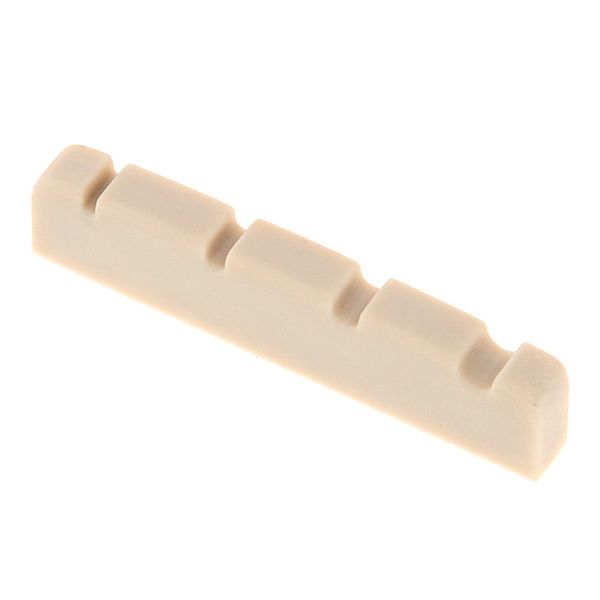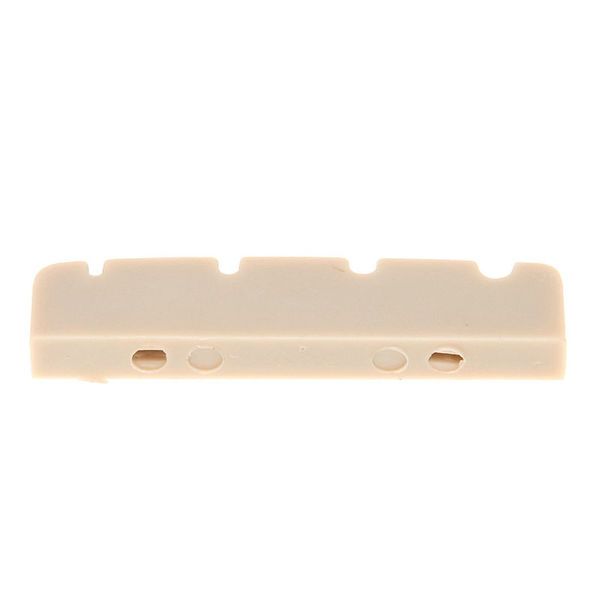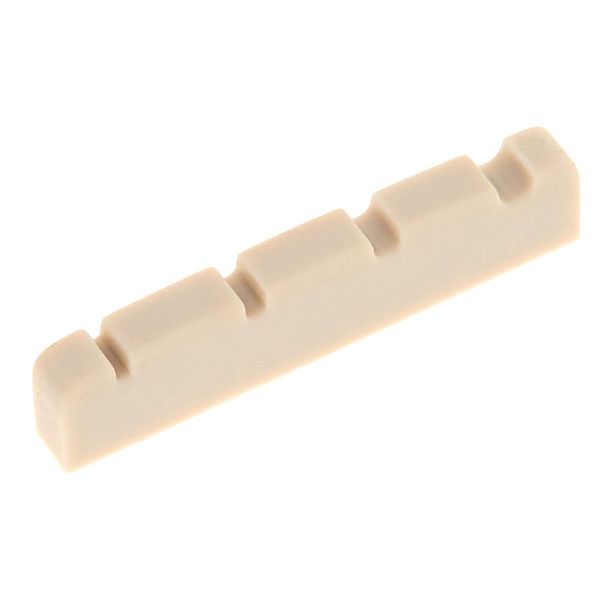There was nothing to discover about Tusq tone, several of my electric and acoustic guitars have Tusq nuts. Those that had mushy plastic nuts got bone instead, and the tone has the same quality level, it's just that bone sounds a shade warmer, and Tusq a shade brighter.
I'd be happy with either but this time I didn't feel I had the patience to sculpt a bone blank so I took a pre-formed Tusq nut. Still had to shorten it with a saw, make it less tall with that saw, and then thinner with sandpaper. Tusq is a little easier to work with, cutting it was not as lengthy , but the difference I like best is Tusq dust does not fly off as much as bone dust.
It tends to fall to the ground, cleaning up around my kitchen table was not as tedious, and the dust does not irritate my skin or my nose, it seems to be more chemically neutral than bone powder.
Polishing Tusq takes less time than polishing bone and removing micro scratches is more efficient with the same sandpaper grits. So, if you are used to working with bone, spend less time doing the last thinning down and polishing because you might remove too much material, almost happened to me at the last step.
Two of the string slots are perfectly half-round but two had a slightly flattened bottom, saw it with my loupe, but shaping them with a tiny bit of 600 sandpaper is quick. Just have to be careful not to touch the sides of the slot to avoid making it wider.
Lastly, the nut looks beige in the pic, which disappointed me a bit because my bass is black and white, but bone is rarely pure white either, so I was going to accept the compromise. However the real thing is pale greyish white so it matches my bass' colors very well.










